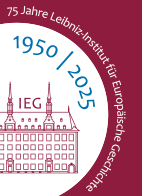Transnational Flows of News: Analysis and Visualization of Historical News across Languages and Countries through Case Studies on (Return) Migration and Environmental/Natural Disasters, 1850–1950
International news networks already began to take shape between 1450 and 1650 (Raymond and Moxham, 2016; Raymond 2013). However, it wasn’t until the expansion and solidification of the telegraph industry in Europe and North America during the mid-1860s that a new era in global connectivity truly began. The establishment of global electronic communication networks quickly brought events from far-flung corners to communities around the world (Winseck and Pike 2007; Boyd-Barrett and Rantanen 1998). Those news were of course influenced by regional and national factors such as politics, culture, and economics, but also feature common narratives that transcend language boundaries (Ponomarenko 2020).The project examines how news on (return) migration and environmental/natural disasters circulated across Europe between 1850 and 1950. It investigates the narratives that foreign newspapers reprinted, the creation of reprint networks, and the type of information that went "viral". The project also seeks to understand what information was omitted and how news across different countries contributed to the construction of national identity over a century. Examining the multilingual discourse (German, Italian, French, and English) on these topics will further yield valuable insights into the formation or manipulation of narratives across languages and over time.


